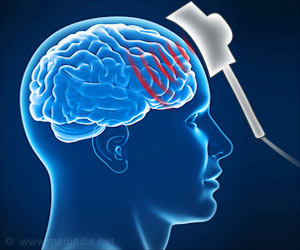A virtual reality experiment indicates that fear, pain, and expectations based on past experiences can interfere with the mind's connection to the body.

The manipulation of top-down interpretation as one's symptomatic body reduces the sense of body ownership
Go to source). The sense of body ownership—the feeling that our body belongs to us—is crucial in distinguishing ourselves from objects and responding to threats. Researchers study it using techniques like the rubber hand illusion (RHI) and full-body illusion (FBI), in which an individual is somehow influenced to identify with ownership of a fake or virtual body. To explore how body ownership can be disrupted, researchers test whether top-down factors—where previous knowledge, memories, and beliefs shape how we perceive and interpret new information or stimuli—weaken the illusion when participants are asked to identify with a virtual body in a negative physical state. Researchers published their results in Frontiers in Psychology.
‘Did You Know?
That our body belongs to us is fundamental to self-awareness. It is known that synchronous touch and vision can be used to induce an illusion of ownership over an artificial rubber hand. #medindia #body #ownership’





That our body belongs to us is fundamental to self-awareness. It is known that synchronous touch and vision can be used to induce an illusion of ownership over an artificial rubber hand. #medindia #body #ownership’
Impact of Negative Physical States on Body Ownership
“Using the full-body illusion in virtual reality—where people begin to feel a virtual body as their own— we investigated how interpreting the virtual body as one's own body, while in a negative physical state, affects this illusion. This research can possibly relate to depersonalization, a condition where people struggle to feel their body as their own,” said Kazuki Yamamoto, researcher and author of the study.Participants were instructed to view a virtual body from the back using a virtual reality (VR) headset and imagine it as their own. Participants would watch the virtual body have their back stroked while their own physical body was stroked also which successfully illicited the illusion. This is a means of using bottom-up factors, which starts with an external stimulus to integrate visual-tactile information, and is a well-tested way to successfully influence the FBI.
To test the effect of top-down factors, the same course of action was instructed with the addition of identifying with the virtual body as their own in a negative physical state (feeling abdominal pain). After the participant watches their virtual body being stroked along their back, a fear stimulus is presented in the form of a knife driving into the virtual body’s back. The fear response is measured using a skin-conductance response and the degree of conductance measures is then related to how strongly the participant is identifying with their virtual body.
One of the main points of this study is using top-down factors, which are expectation or biases on what something should feel like based on prior experience or interactions, to determine if these can also influence a sense of body ownership.
Relationship Between Pain and the Full-Body Illusion
Results indicated that the full-body illusion was inhibited when asked to view the virtual body as their own with abdominal pain, and the higher the degree of depersonalization tendencies within the participants resulted in a lower degree of FBI.Advertisement
Given the findings of the study, more research can be done to fully understand why an inhibition of the illusion occurred.
The foundation provided by this study and subsequent studies can aid in clinical intervention for those suffering from disturbed body ownership, such as individuals with depersonalization-derealization disorder. This work can improve those individuals’ sense of body ownership, which can greatly improve lives, not only for safety purposes but also sensory and perception purposes.
Reference:
- The manipulation of top-down interpretation as one's symptomatic body reduces the sense of body ownership - (https://www.frontiersin.org/journals/psychology/articles/10.3389/fpsyg.2024.1399218/full)
Source-Eurekalert













